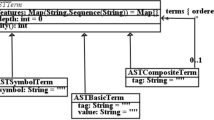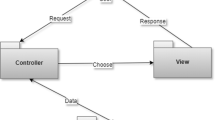Abstract
Unified Modeling Language (UML) is widely used as a system level specification language in embedded system design. Due to the increasing complexity of embedded systems, the analysis and validation of UML specifications is becoming a challenge. UML activity diagram is promising to modeling the overall system behavior. However, lack of techniques for automated test case generation is one major bottleneck in the UML activity diagram validation. This article presents a methodology for automatically generating test cases based on various model checking techniques. It makes three primary contributions: First, we propose coverage-driven mapping rules that can automatically translate activity diagram to formal models. Next, we present a procedure for automatic property generation according to error models. Finally, we apply various model checking based test case generation techniques to enable efficient test case generation. Our experimental results demonstrate that our approach can reduce the validation effort drastically by reducing both test case generation time and required number of test cases to achieve a functional coverage goal.
Similar content being viewed by others
References
Rumbaugh J, Jacobson I, Booch G (2001) The unified modeling language user guide. Addison-Wesley, Boston
OMG (2007) UML superstructure V2.1.2. Available at http://www.omg.org/docs/formal/07-11-02.pdf
Martin G (2002) UML for embedded systems specification and design: motivation and overview. In: Design automation and test in Europe 2005, pp 773–775
Martin G, Müller W (2005) UML for SOC design. Springer, Berlin
Müller W, Rosti A, Bocchio S, Riccobene E, Scandurra P, Dehaene W, Vanderperren Y (2006) UML for ESL design–basic principles, tools, and applications. In: International conference on computer-aided design 2006, pp 73–80
Peterson J (1981) Petri nets theory and the modeling of systems. Prentice-Hall, New York
Chen M, Mishra P, Kalita D (2008) Coverage-driven automatic test generation for UML activity diagrams. In: Proceedings of Great Lakes symposium of VLSI (GLSVLSI), pp 139–142
Ammann P, Black P, Majurski W (1998) Using model checking to generate tests from specifications. In: Proceedings of international conference on formal engineering methods (ICFEM), pp 46–54
Bryant RE (1986) Graph-based algorithms for Boolean function manipulations. IEEE Trans Comput 35(8):677–691
Prasad M, Biere A, Gupta A (2005) A survey of recent advances in SAT-based formal verification. Int J Softw Tools Technol Transf 7(2):156–173
Biere A, Cimatti A, Clarke E, Zhu Y (1999) Symbolic model checking without BDDs. In: International conference on tools and algorithms for the construction and analysis of systems, pp 193–207
Riccobene E, Scandurra P, Rosti A, Bocchio S (2005)A SoC design methodology involving a UML 2.0 profile for SystemC. In: Design automation and test in Europe, pp 704–709
Müller W, Rosti A, Bocchio S, Riccobene E, Scandurra P, Dehaene W, Vanderperren Y (2006) UML for ESL design: basic principles, tools, and applications. In: International conference on computer aided design, pp 73–80
Rosenberg D, Mancerella S (2010) Embedded systems development using SysML: an illustrated example using enterprise architect. Sparx Systems Pty Ltd and ICONIX
Lamberg K (2007) Trends and perspectives in automated ECU testing. In: Automotive electronic, June, 2007
dSPACE. http://www.dspace.com
Lavagno L, Müller W (2006) UML as a next-generation language for SoC design. In: Electronic design
Heckel R, Lohmann M (2003) Towards model-driven testing. In: International workshop on test and analysis of component based systems, pp 284–291
Briand LC, Labiche Y (2002) A UML-based approach to system testing. Softw System Model 1(1):10–42
Chen T, Poon P, Tang S, Tse T (2005) Identification of categories and choices in activity diagrams. In: International conference on software quality 2005, pp 55–63
Wang L, Yuan J, Yu X, Hu J, Li X, Zheng G (2004) Generating test cases from UML activity diagram based on gray-box method. In: Asia-pacific software engineering conference 2004, pp 284–291
Kim H, Kang S, Baik J, Ko I (2007) Test cases generation from UML activity diagrams. In: Software engineering, artificial intelligence, networking, and parallel/distributed computing 2007, pp 556–561
Chen M, Qiu X, Li X (2006) Automatic test case generation for UML activity diagrams. In: International workshop on automation on software test 2006, pp 2–8
Chen M, Qiu X, Xu W, Wang L, Zhao J, Li X (2009) UML activity diagram based automatic test case generation for Java programs. Comput J 52(5):545–556
Unhelkar B (2005) Verification and validation for quality of UML 2.0 models. Wiley, New York
Bell A, Haverkort BR (2005) Sequential and distributed model checking of Petri nets. Int J Softw Tools Technol Transf 7(1):43–60
Jensen K, Kristensen LM, Wells L (2007) Coloured Petri nets and CPN tools for modelling and validation of concurrent systems. Int J Softw Tools Technol Transf 9(3–4):213–254
Eshuis R (2006) Symbolic model checking of UML activity diagrams. ACM Trans Softw Eng Methodol 15(1):1–38
Cimatti A, Clarke EM, Giunchiglia F, Roveri M (1999) NUSMV: a new symbolic model verifier. In: International conference on computer aided verification 1999, pp 495–499
Guelfi N, Mammar A (2005) A formal semantics of timed activity diagrams and its PROMELA translation. In: Asia-Pacific software engineering conference 2005, pp 283–290
Das D, Kumar R, Chakrabarti PP (2006) Timing verification of UML activity diagram based code block level models for real time multiprocessor system-on-chip applications. In: Asia-Pacific software engineering conference 2006, pp 199–208
Chen M, Mishra P, Kalita D (2007) RTL towards test generation from systemc TLM specifications. In: High level design validation and test workshop 2007, pp 91–96
Fraser G, Wotawa F (2007) Improving model-checkers for software testing. In: International conference on software quality 2007, pp 25–31
Mishra P, Dutt N (2005) Functional coverage driven test generation for validation of pipelined processors. In: Design automation and test in Europe 2005, pp 678–683
Koo H, Mishra P (2006) Functional test generation using property decompositions for validation of pipelined processors. In: Design automation and test in Europe, pp 1240–1245
Mishra P, Chen M (2009) Efficient techniques for directed test generation using incremental satisfiability. In: International conference on VLSI design, pp 65–70
Chen M, Qin X, Mishra P (2010) Efficient decision ordering techniques for SAT-based test generation. In: Design, automation and test in Europe, pp 490–495
Chen M, Mishra P (2010) Functional test generation using efficient property clustering and learning techniques. IEEE Tran Comput-Aided Des Integr Circuits Syst 29(3):396–404
Rayadurgam S, Heimdahl MPE (2001) Coverage based test-case generation using model checkers. In: International conference and workshop on the engineering of computer based systems 2001, pp 83–91
Clarke EM, Grumberg O, Peled DA (2000) Model checking. MIT Press, Cambridge
Marques-Silva J, Sakallah K (1999) GRASP: A search algorithm for propositional satisfiability. IEEE Trans Comput 48(5):506–521
Moskewicz MW, Madigan CF, Zhao Y, Zhang L, Malik S (2001) Chaff: Engineering an efficient SAT solver. In: Design automation conference, pp 530–535
Ericsson M (2004) Activity diagrams: What they are and how to use them. The Rational Edge
Zhu H, Hall P, May J (1997) Software unit test coverage and adequacy. ACM Comput Surv 29(4):366–427
McMillan KL Cadence SMV. Available at http://www.kenmcmil.com/
Reshadi M, Gorjiara B, Dutt N (2006) Generic processor modeling for automatically generating very fast cycle-accurate simulators. IEEE Trans CAD Integr Circuits Syst 25(12):2904–2918
Hennessy J, Patterson D (2003) Computer architecture: a quantitative approach. Morgan Kaufmann, San Mateo
Author information
Authors and Affiliations
Corresponding author
Rights and permissions
About this article
Cite this article
Chen, M., Mishra, P. & Kalita, D. Efficient test case generation for validation of UML activity diagrams. Des Autom Embed Syst 14, 105–130 (2010). https://doi.org/10.1007/s10617-010-9052-4
Received:
Accepted:
Published:
Issue Date:
DOI: https://doi.org/10.1007/s10617-010-9052-4




